Merak, also designated as Beta Ursae Majoris, is the fifth brightest star in the constellation of Ursa Major. Merak is one of the four stars which form the bowl of the famous asterism known as the Big Dipper.
Key Facts & Summary
- Merak is a bluish-white subgiant star of spectral type A1IVps.
- The star is located at around 79.7 light-years / 24.45 parsecs away from the Sun.
- Merak is a suspected variable type of star having an apparent magnitude of +2.37 and an absolute magnitude of +0.61.
- Since Merak has exhausted its hydrogen supplies, the star has begun to cool but continues to generate energy through the thermonuclear fusion of hydrogen in a shell outside the core.
- Despite this, Merak is still much hotter than our sun, with average temperatures at around 9.377 K.
- Merak is much bigger than our sun, having 2.7 solar masses and a radius of around 3.0 solar radii.
- Merak generates enormous amounts of energy. It is around 63.015 times brighter than our sun.
- The star has a surface gravity of around 3.83 cgs, and it is also a fast spinner. Merak spins with an estimated rotational velocity of around 46 km / 28.5 mi per second.
- Merak’s radial velocity has been estimated to be at around -12.0 km / -7.4 mi per second.
- Merak is part of the loose open cluster named Ursa Major moving group.
- Infrared observations indicate an excess emission that suggests the presence of a circumstellar disk of orbiting dust.
- This feature is very similar to the stars Fomalhaut and Vega.
- Merak’s disk of orbiting dust has been estimated to have temperatures of around 120 K.
- This disk has 0.27% of the mass of Earth, and it is located at around 47 AU from Merak.
- Merak displays unusually strong lines of certain metallic elements.
The star’s traditional name, Merak, comes from the Arabic “al-maraqq”, which translates to “the flank” or “the Ioins” – referring to the position of the star in the constellation.
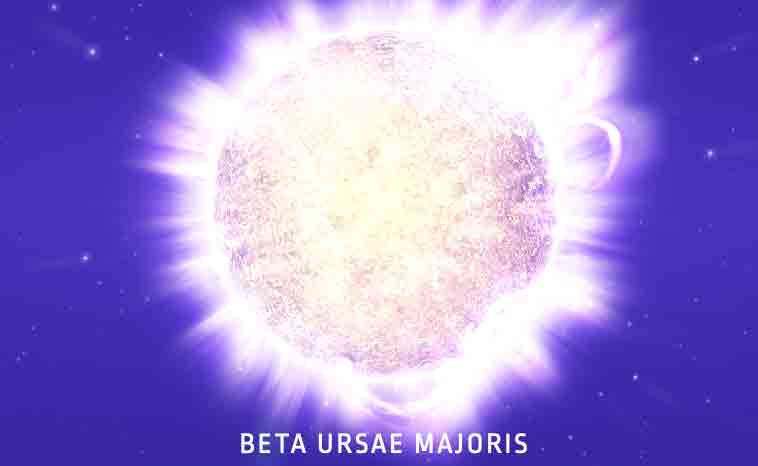
Many ancient astronomers from Arabic origin, associated the stars which form the Big Dipper, with a funeral procession. The stars which marked the celestial bowl – Merak, Dubhe, Megrez, and Phecda – represented the bier, while the stars which represented the celestial handle – Alkaid, Mizar, and Alioth – represented the mourners.
Formation
Mirak formed at around 500 million years ago. The star is associated with the loose open cluster named Ursa Major moving group. Mirak, along with another four stars of the Big Dipper asterism form a part of the loose open cluster.
These stars share a common origin and motion through space. This being said, Mirak most likely formed from in the open cluster. Gravity pulled the swirling gas and dust together and resulted in the Beta Ursae Majoris star, that we today now see.
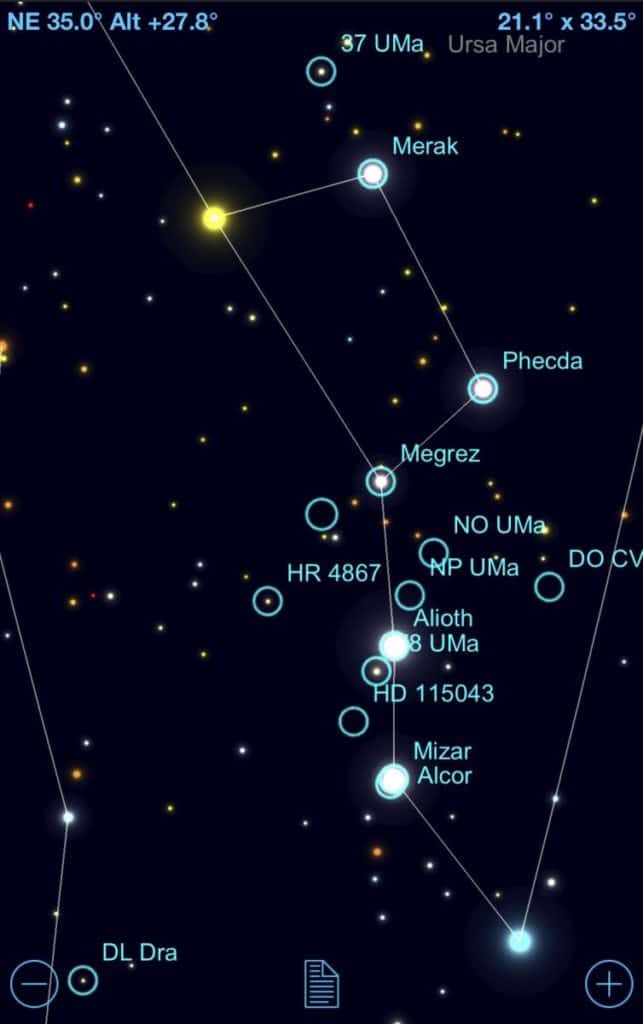
Distance, Size, and Mass
Merak is located at around 79.7 light-years / 24.45 parsecs away from the Sun. It is visible to the naked eye, being the 81st brightest star in the night sky.
Merak is much bigger than our sun, having 2.7 solar masses, or 270% of the sun’s mass, and a radius of around 3.0 solar radii, or 300% of the sun’s radius. It is several times bigger than our sun.
Other Characteristics
Merak is a bluish-white subgiant star of spectral type A1IVps. It is also considered a mild Am star, since it is a chemically peculiar star with unusually strong lines of certain metallic elements in its spectrum.
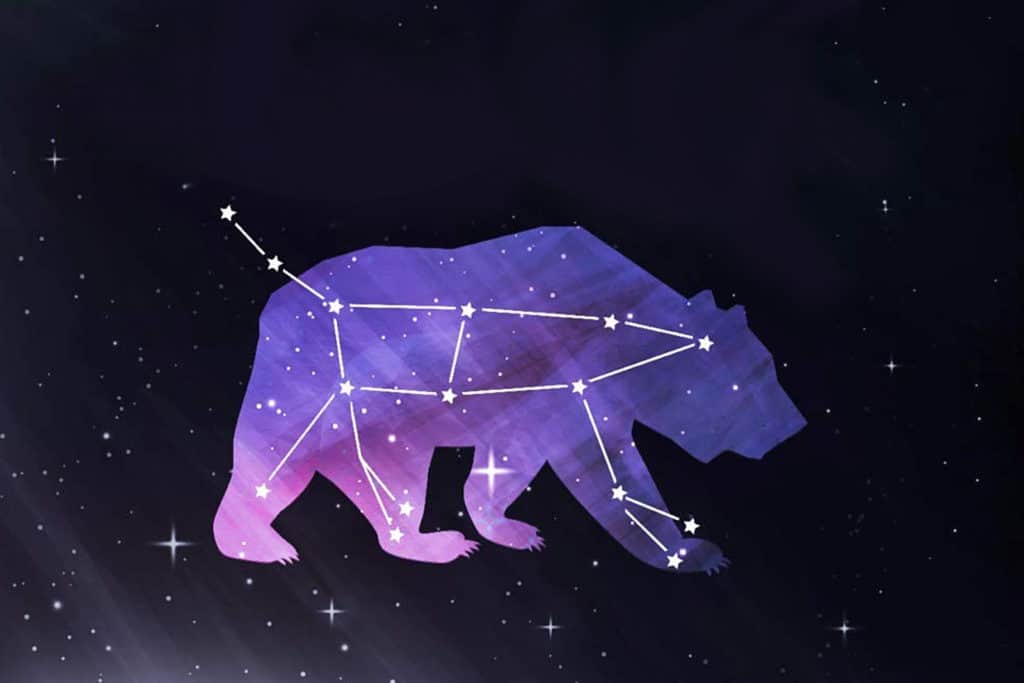
Merak is a suspected variable type of star having an apparent magnitude of +2.37 and an absolute magnitude of +0.61. Since Merak has exhausted its hydrogen supplies, the star has begun to cool and expand but continues to generate energy through the thermonuclear fusion of hydrogen in a shell outside the core.
Even in this situation, Merak is still much hotter than our sun, with average temperatures at around 9.377 K, being 1.6 times hotter. The subgiant generates enormous amounts of energy. It is around 63.015 times brighter than our sun.
The star has a surface gravity of around 3.83 cgs, and it is also a fast spinner. Merak spins with an estimated rotational velocity of around 46 km / 28.5 mi per second. Merak’s radial velocity has been estimated to be at around -12.0 km / -7.4 mi per second, it shares this motion with the stars in the open cluster named Ursa Major moving group.
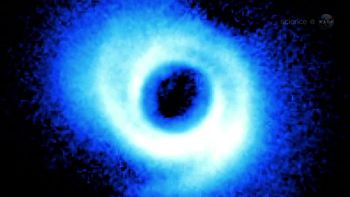
The Infrared observations indicate an excess emission that suggests the presence of a circumstellar disk of orbiting dust. This feature is very similarly displayed by the Fomalhaut and Vega stars.
Merak’s disk of orbiting dust has been estimated to have temperatures of around 120 K. This disk has 0.27% of the mass of Earth, and it is located at around 47 AU from Merak.
Location
Merak / Beta Ursae Majoris is located in the constellation of Ursa Major, the Great Bear. Though it is the fifth brightest star of the constellation, its designation was not based on its brightness.
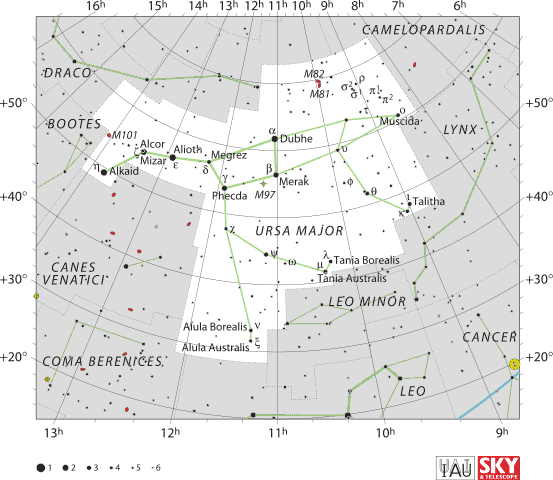
Merak is the bottom right star of the Big Dipper’s celestial bowl. Apart from this, Merak is also one of the Pointer Stars, along with its neighbor Dubhe.
These stars point to the direction of Polaris, the northern star, which also marks the true north. In the opposite direction, the stars point towards Regulus, the brightest star of Leo.
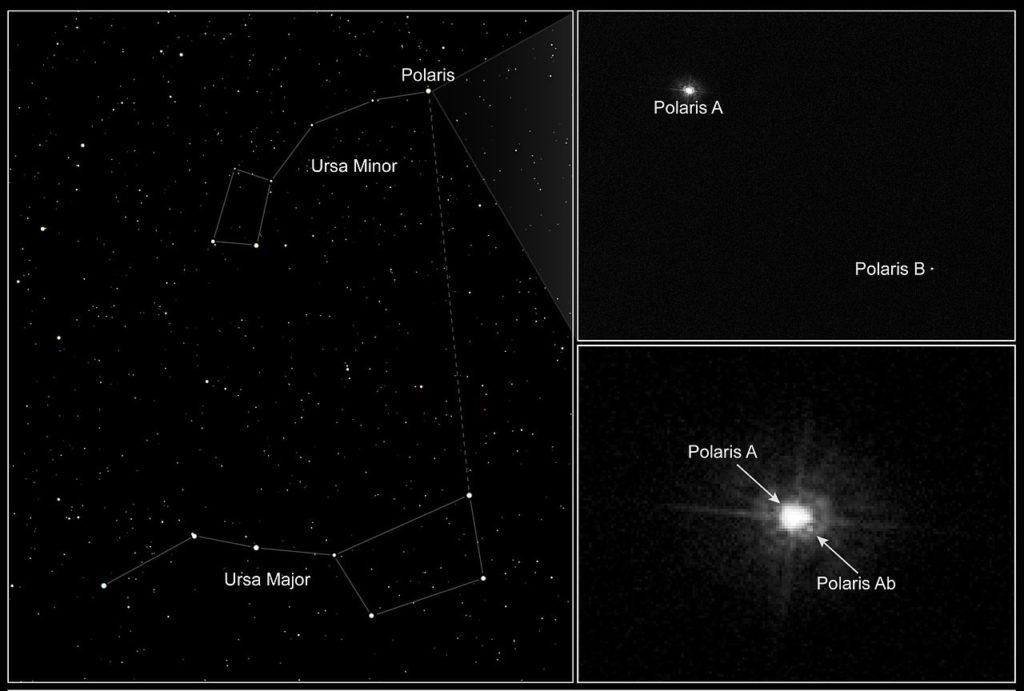
Merak and the Ursa Major constellation is circumpolar and thus can be seen throughout the year to most observers in the northern hemisphere. All the months of spring are favorable in observing this constellation.
Ursa Major is the third largest constellation and the largest of all the northern constellations. It hosts many interesting stars and deep sky objects such as galaxies, nebulae, Messier objects, and clusters.
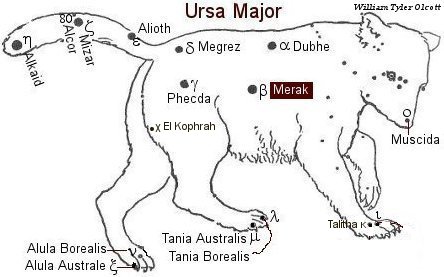
The Future
It is possible for planets to reside in Merak’s circumstellar disk of dust, though none have been detected yet. Since Alkaid and Dubhe are not part of the Ursa Major Moving Group, they will eventually lead to the Big Dipper’s eventual dissipation in the course of the next several thousands of years. Merak is part of the stellar association group and thus has a different motion and direction through space.
Did you know?
- One of the most famous galaxies, the Pinwheel Galaxy, resides in the Ursa Major constellation.
- The Chinese knew Merak as the Second Star of Northern Dipper – referring to an asterism which corresponds to the western Big Dipper asterism.
- Merak was known as Pulaha in Hindu mythology. He was the son of Brahma and one of the Seven Sages.
- Merak also outlines the Great Bear’s hindquarters along with Dubhe, Megrez, Phecda, while Alioth, Mizar, and Alkaid form the Great Bear’s tail.
Sources:
Image source:
- https://osr.org/wp-content/uploads/2019/11/beta-ursae-majoris-star.jpg
- https://www.cloudynights.com/uploads/monthly_04_2019/post-239161-0-65482600-1555528000.jpg
- https://littleastronomy.com/wp-content/uploads/2019/05/ursa_major_cover.jpg
- https://upload.wikimedia.org/wikipedia/commons/thumb/f/f1/A_Stars_Spiral.ogv/350px-seek%3D50-A_Stars_Spiral.ogv.jpg
- https://upload.wikimedia.org/wikipedia/commons/thumb/1/13/Ursa_Major_IAU.svg/553px-Ursa_Major_IAU.svg.png
- https://www.star-facts.com/wp-content/uploads/2019/09/Polaris-Hubble.jpg?189db0&189db0
- https://www.constellationsofwords.com/images/stars/Merak.JPG
